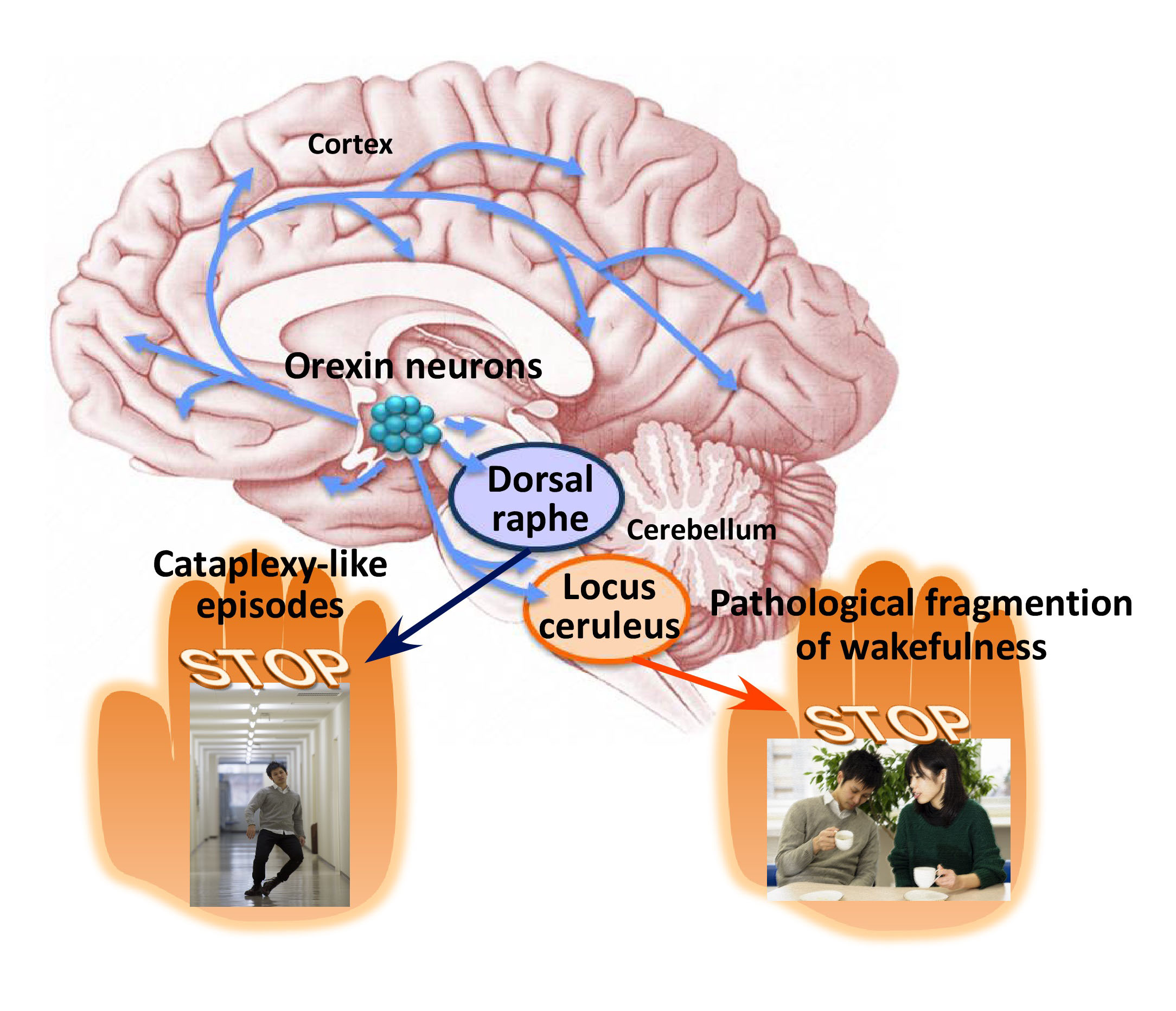The loss of orexin neurons in humans is associated with the sleep disorder narcolepsy, which is characterized by excessive daytime sleepiness and cataplexy. Mice lacking orexin peptides, orexin neurons, or orexin receptors recapitulate human narcolepsy phenotypes, further highlighting a critical role for orexin signaling in the maintenance of wakefulness. Despite the known role of orexin-neurons in narcolepsy, the precise neural mechanisms downstream of these neurons remain unknown. We found that targeted restoration of orexin receptor expression in the dorsal raphe (DR) and in the locus coeruleus (LC) of mice lacking orexin receptors inhibited cataplexy-like episodes and pathological fragmentation of wakefulness (i.e., sleepiness), respectively. The suppression of cataplexy-like episodes correlated with the number of serotonergic neurons restored with orexin receptor expression in the DR, while the consolidation of fragmented wakefulness correlated with the number of noradrenergic neurons restored in the LC. Furthermore, the pharmacogenetic activation of these neurons using designer receptor exclusively activated by designer drug (DREADD) technology ameliorated narcolepsy in mice that lacked orexin neurons. These results suggest that DR serotonergic and LC noradrenergic neurons play differential roles in orexin neuron-dependent regulation of sleep/wakefulness. Finally, our success in improving narcoleptic symptoms by DREADD may lead to a novel type of gene therapy.

Hasegawa E., et al.( Mieda M.) : Orexin neurons suppress narcolepsy via 2 distinct efferent pathways : J Clin Invest. 2014;124(2):604–616
Department of Molecular Neuroscience and Integrative Physiology, Faculty of Medicine, Kanazawa University
























